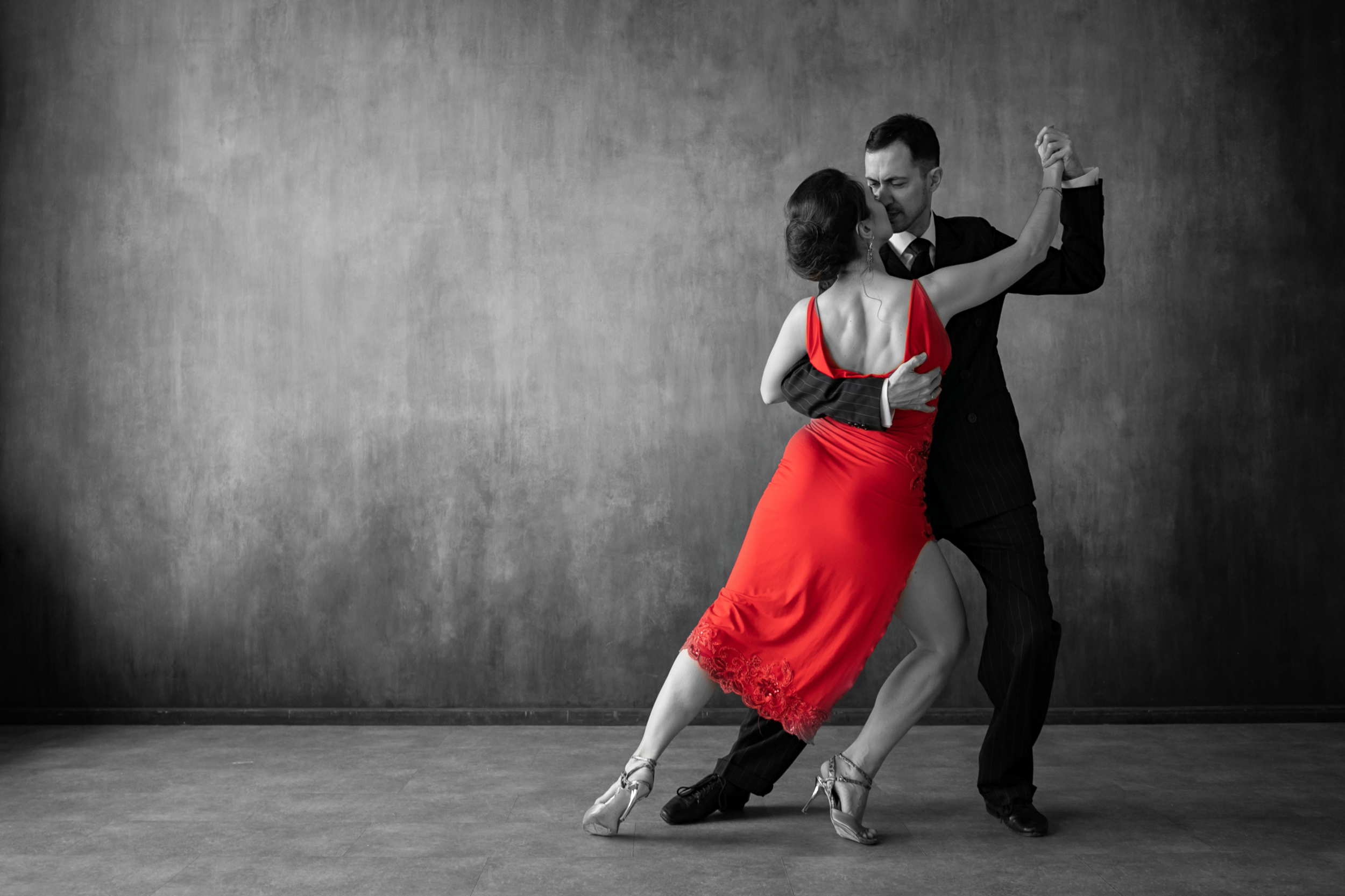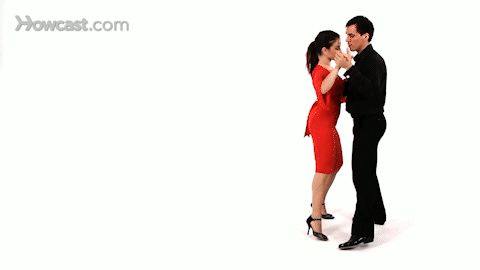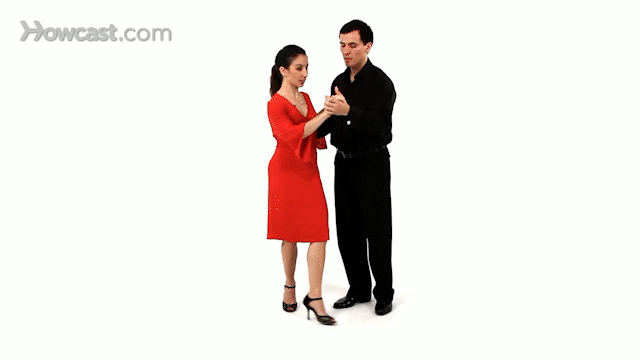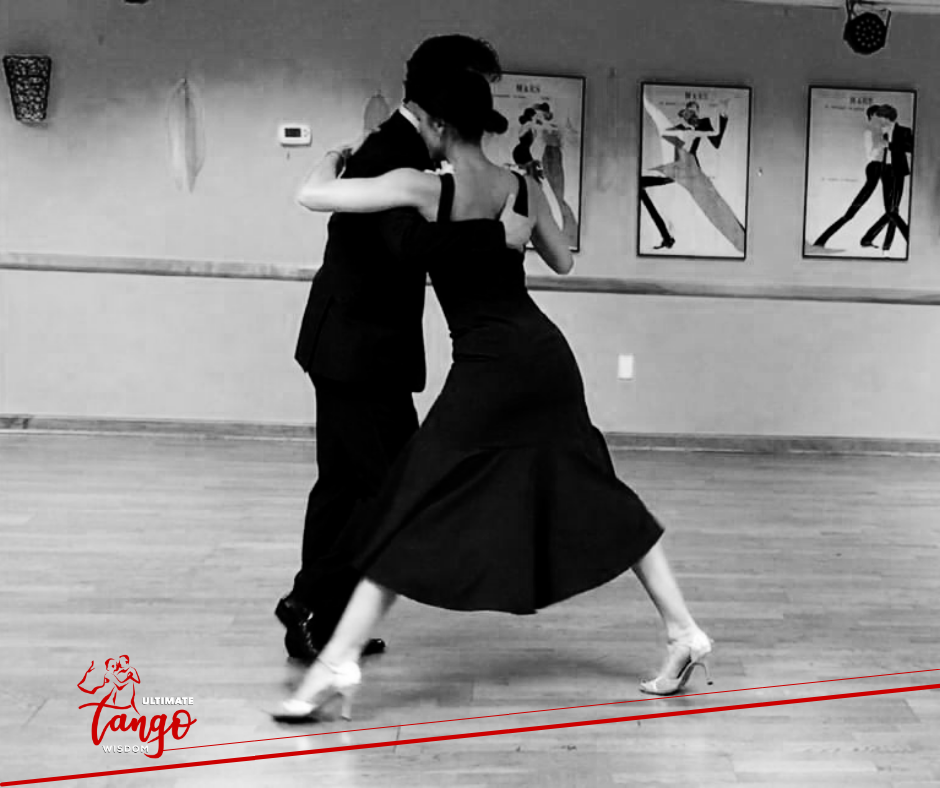All You Have To Know About Enrosque - Planeo - Lapiz
The enrosque, planeo, and lapiz are some of the most popular tango steps often used in combination to achieve a dramatic, elegant effect on the dance floor.
All these figures of Argentine tango are considered adornos or embellishments that add some flair to each movement, but can also be lead or performed as an important component of a standalone figure. These steps can be done repeatedly in a sequence depending on how both the leader and follower might want to utilize each one to achieve a certain effect.
What’s In a Name?
To understand the enrosque, planeo, and lapiz, one must first be acquainted with the meaning of their names. As with most tango steps, their names describe what they might look like when executed.
A post from Tango Argentino de Tejas aptly summarizes the meaning of the enrosque, planeo, and lapiz:
Enrosque
This means “to coil” or “twist.” Usually executed when the follower dances a molinete. As they do so, the leader pivots on their supporting foot, hooking or coiling the working leg behind or around in front of the supporting leg.
Lapiz
Literally meaning “pencil.” The leader traces a circular motion on the floor “with the toe or inside edge of the working foot, while turning or waiting on the supporting foot.” Executing the lapiz may vary from small adornments done while marking time to large sweeping arcs that precede the follower as they move around the leader in a molinete.
Planeo
“To pivot” or “glide.” This step usually occurs when the leader steps forward onto a foot, usually their left, and pivots with the other leg trailing or gliding behind the follower. Meanwhile, the follower dances an additional step or two around the leader.
A planeo may also occur when the leader stops the follower mid-stride with a slight downward lead. The leader dances around the follower while the latter is being pivoted on their supporting leg as the extended leg either trails or leads. This step can be performed by both the leader and the follower.
Simply put, these three steps make use of a coiling or twisting motion (enrosque), gliding or pivoting motion (planeo), and a tracing circular motion (lapiz).
Should one decide to use them all together, a good combination would perhaps be an enrosque-planeo-lapiz sequence, although leaders and followers can choose to change up the order depending on what feels best for the music.
In this Short Sequence, Hernan and Anita show us a beautiful combination with an enrosque and lapiz.
Learning the Enrosque, Planeo & Lapiz
There’s no definitive history for when each of these steps was developed, but one can safely say that they were likely conceptualized just as Argentine tango itself was developing from the ports of Buenos Aires. Similar to other figures or steps in tango, the enrosque, planeo, and lapiz seem to be derived from very simple, even everyday concepts, thus reflecting Argentine tango’s humble roots.
On the surface, these steps seem easy to execute, but in reality, they require a lot of practice and a great measure of technical understanding.
Beginners may have some difficulty performing the enrosque, planeo, and lapiz, especially when done in combination. However, it is still possible.
In studying these three steps, it is always a good idea to have some visual accompaniment to understand how the movement works. Of course, before doing these steps in combination with other steps, one must first understand the basic technique.
Here is a closer look at the enrosque, planeo, and lapiz with videos teaching basic techniques, as well as some combinations and advice for both leaders and followers.
How To Enrosque
This video from Howcast explains that an enrosque is “another embellishment for leaders.” Since it is a pivot, a lot of balance is required to execute the move properly. Poise is also important. Here, the enrosque is performed with the media luna, saccada, and the motion ends with a lapiz.
● Advice for leaders: Connection between the leader and the follower is important in making the enrosque work. Thus, leaders must take care not to disconnect with the follower. To do this, both leader and follower must be “heart to heart” at all times or as much as possible, so the pivoting motion does not disconnect from the movement of the leader’s shoulder.
● Advice for followers: To maintain the connection, followers must follow the leader’s tortsion. This will make one aware of the speed at which the leader moves. It also helps the leader focus on the follower as the latter moves around their partner.
On the other hand, this video from Tango Space shows the enrosque being executed by the follower.
In this sequence, the leader begins by leading the follower a forward ocho and then changes the direction. As the leader unwraps the follower she can execute the enrosque.
● Advice for leaders: Find contact with the follower's foot and stay in front of them.
● Advice for followers: First, really dissociate and start pivoting from one's torso. Relax the free leg for the enrosque to happen naturally. Finally, make sure one is aligned. It is easy to lose one's balance with the enrosque so alignment is important in keeping steady.
How To Do Planeo
This video from Howcast distinguishes the planeo from the calesita, which is often confused with the planeo because of their similarities in movement. In a planeo, the leader will lower their level so that their follower could also lower theirs.
By bending down the knees slightly, the follower’s leg will then be able to create a longer stride while maintaining their weight in one axis as the leader takes them around. In a calesita, bending the knees is not required, and both partners maintain the same level.
In the planeo, the follower maintains their low figure until the leader changes their level by bringing their feet together.
● Advice for leaders: Since leaders will be the ones to bring the follower around while the latter is lowered, it is important for leaders to maintain consistent step sizes as much as possible. This way, the followers can have an easier time being taken around while keeping their low position.
● Advice for followers: While followers are not as active in planeos, it is still important that they maintain their low position which allows and encourages the extension of the leg. Soooo, don’t forget to extend the leg while doing the planeo.
For those who want to express the soft and romantic aspect of tango music, this video from Tango Space teaches one how to do back-to-back planeos.
Aside from being gorgeous to dance, it is one way of expressing a musical phrase and for followers to display their aptitude in postural alignment and dissociation.
● Advice for leaders: Drop one’s center in the side step. Keep the center low. Take a side step to go around the follower, then invite them to pivot. Change the weight when the follower goes forward to begin the second planeo. Relax and release the embrace to give the follower some space to dissociate.
● Advice for followers: Doing double planeos is all about alignment and dissociation. Keep the right knee bent a bit. Start the movement from the torso. When the leader gives one space, take time to do a beautiful spiral.
How To Lapiz
The lapiz, according to this video from Howcast, is an embellishment often done by the leader. In the video, they combine the lapiz with some steps involving the media luna and the parada.
● Advice for leaders: There are several instances in which weight must be transferred for both the leader and the follower. It is best for leaders to be aware of when this should happen. Moreover, coordination is also important for the lapiz so as not to trip the follower with the circular motion.
● Advice for followers: Similar to that of the planeo, a follower’s role in a lapiz is less active and requires only following and supporting the leader. It is important that followers maintain coordination and communication with their leader to receive subtle cues, especially when weight shifting is needed.
Since the lapiz is often done in combination with other steps, this video from Tango Argentino Köln Tango shows how to combine the enrosque and lapiz elegantly.
The sequence begins with a Salida Americana. When the follower is stepping backward, the leader performs the lapiz. Then the leader accompanies the follower with an enrosque, with the former doing another lapiz during the follower's backward step. This move requires a lot of balance, especially since the leader is constantly moving on one foot.
● Advice for leaders: The legs and torso should dissociate while the follower is stepping backward. The hips should also be straight. Lead with the upper body. Do not begin the lapiz earlier; instead, wait for the follower to step backward.
● Advice for followers: Followers dance to a giro, the legs stepping on an imaginary square. Prepare with one's upper body when one feels the leader's invitation for a turn. The backward step is usually the critical moment as this would signal to the leader when they could execute the lapiz. The follower's flow of movement consequently gives the leader a small impulse, supporting the latter's enrosque without force.
Graceful Steps Require Practice
The enrosque, planeo, and lapiz are beautiful adornos that can make one’s dance more playful and enjoyable.
However, as with all tango steps, they require practice and even some measure of confidence to be executed well.
After all, these steps require a lot of balance, awareness, weight shifting, poise, and elegance. Otherwise, one can get entangled with their partner, which may result in an accident or even an injury. Practice these steps with diligence and, eventually, you would be able to perform them like a pro.









